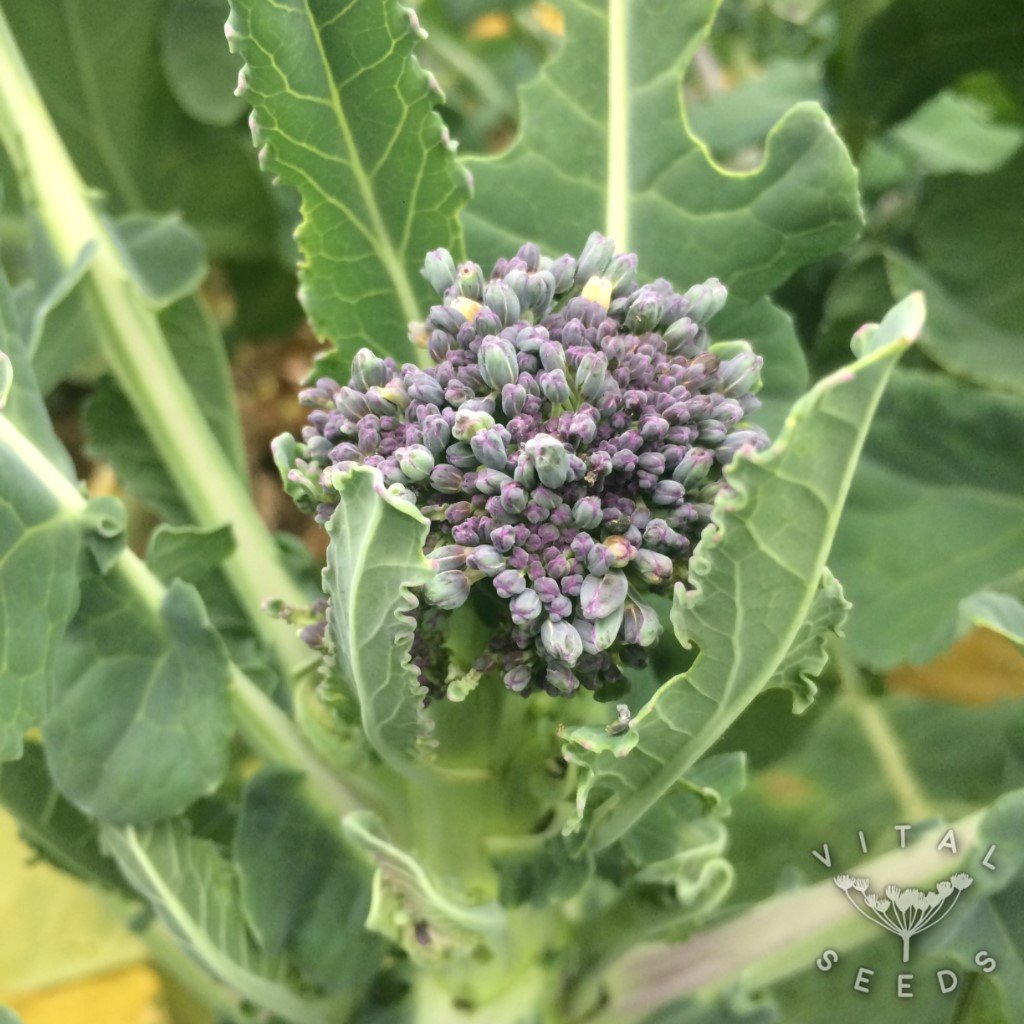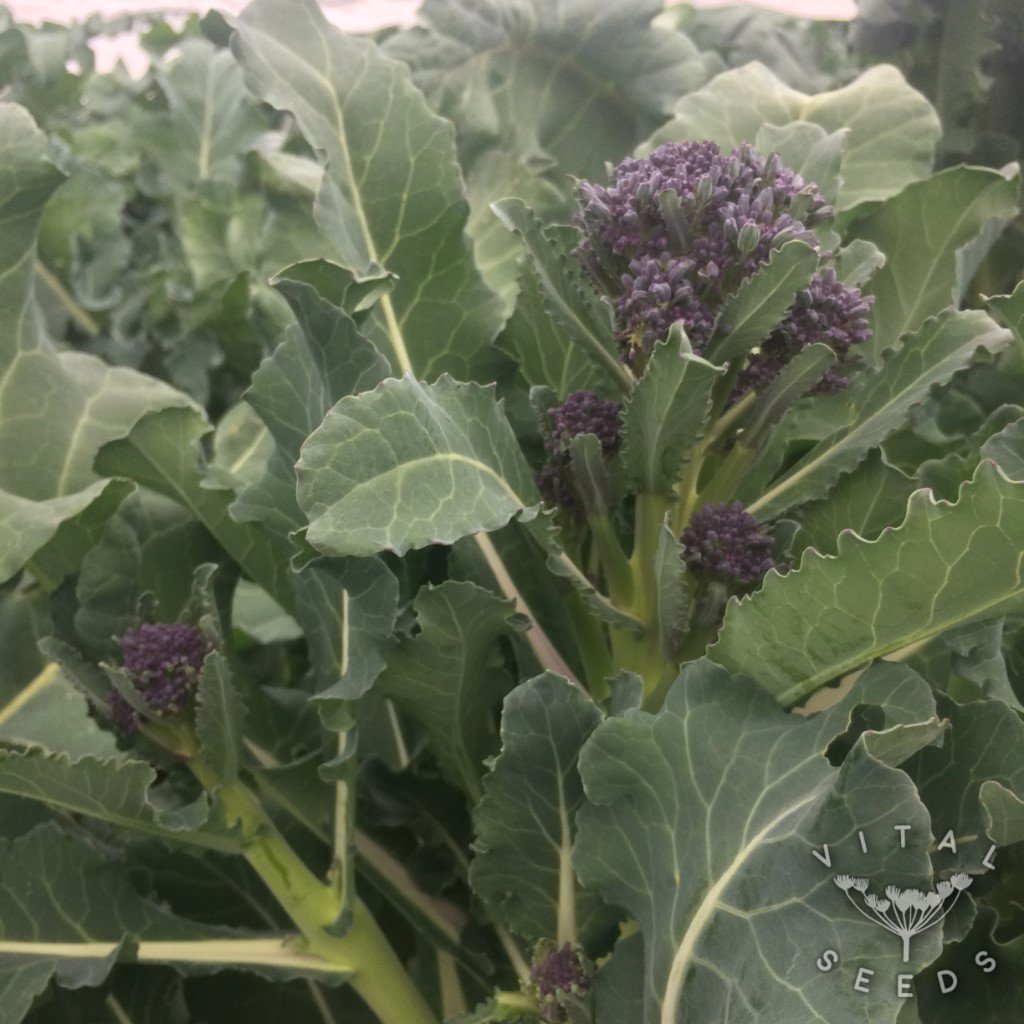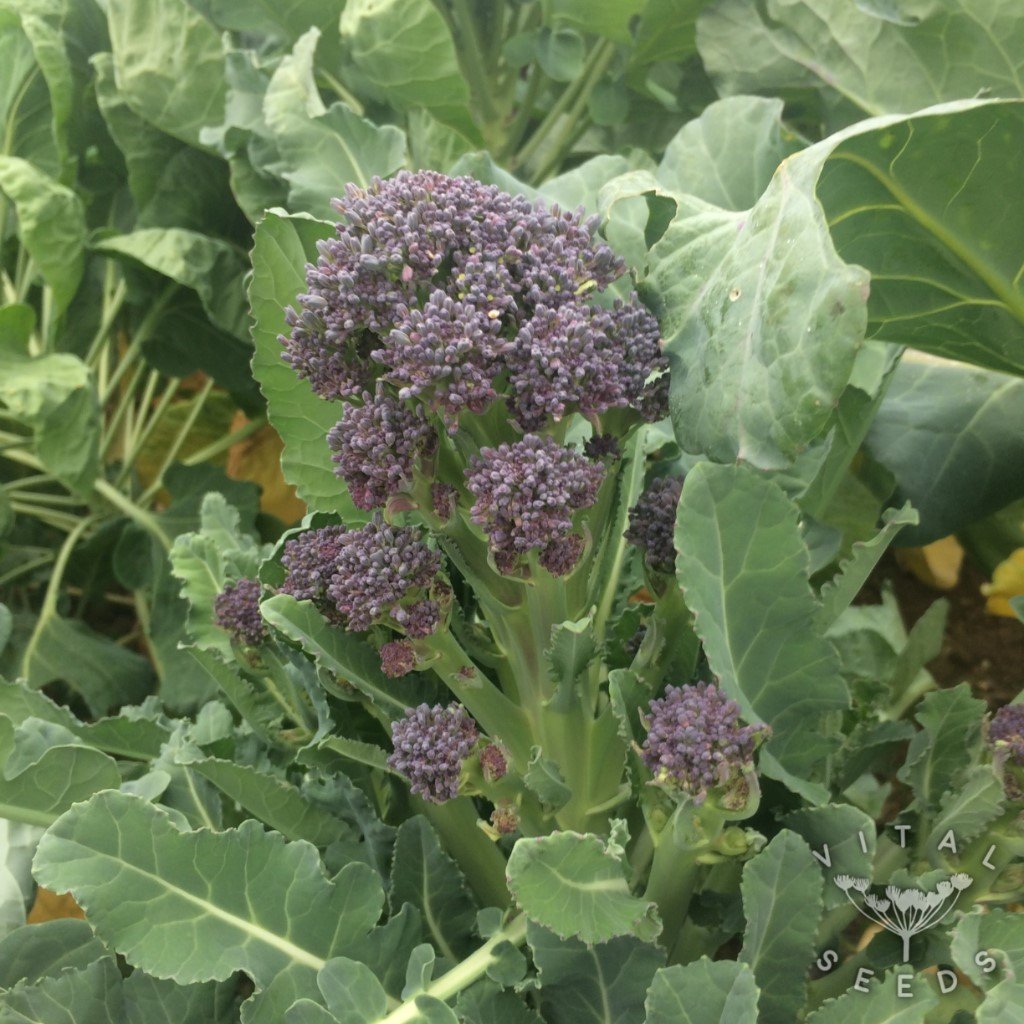| Month | J | F | M | A | M | J | J | A | S | O | N | D |
|---|---|---|---|---|---|---|---|---|---|---|---|---|
| Sow | ||||||||||||
| Transplant | ||||||||||||
| Harvest |
When to sow: Apr-May
Spacing: 60x45cm
Seed Sowing
There are many varieties of broccoli and calabrese that can be sown at different times of the year. It’s best to grow them in deep modules earlier in the year, then transplant them out later. They do not like root disturbance, so handle them gently. Direct sowing is better later in the year, as they do not respond well to being transplanted during hot weather.
Transplanting
Transplant your seedlings into their final growing position in full sun or part shade around 6 weeks after sowing. Ensure the area is weed-free and enriched with plenty of organic matter before planting. Spacing depends on the variety; there are smaller varieties available that need less space. When transplanting, firm them in well, as they prefer to be tucked in tightly. Protect from frost if necessary.
Plant Care
Keep them consistently watered; hot weather and dry conditions encourage bolting. Mulch with straw to retain water and prevent weed growth. Taller plants in windier sites may need cane support to avoid root rock.
Challenges
Protect them from slugs and snails; use mesh to ward off pigeons and caterpillars. Copper collars can be effective against cabbage root fly. Clubroot is a disease affecting brassicas, causing root deformities and stunted growth. If your soils have clubroot-causing organisms, improve drainage and add lime to reduce infection. Otherwise, consider growing in pots.
Harvest
To harvest good calabrese or broccoli, pick them when the head is compact and before it starts to flower. Cut the central head first, leaving the main stem to produce smaller heads continuously for up to two months.
Culinary Ideas
Broccoli and stilton soup is a classic, and it’s great for adding to pasta dishes, stir-fries, ramen, and curries. It can be eaten raw in salads and used as crudités. Lastly, try fritto misto, an Italian dish of battered and fried vegetables, herbs, and other foods with garlicky aioli. Whatever you do, avoid overcooking, as broccoli and calabrese are both rich sources of vitamin C, B6, potassium, iron, magnesium, calcium, and fiber.
Seed Saving
Calabrese and broccoli belong to the species Brassica oleracea and will cross with all other varieties within this species; therefore, isolate them from each other. It’s best to grow them in a block of at least twelve plants. Choose specimens that are true-to-type, healthy, and have show traits you’d like to see in future crops. Allow plants to flower and be pollinated by insects. When the thin green seed pods turn brown and the seeds black, cut the stem and leave them to mature further on a sheet indoors. When fully dry, the pods will easily open, and the seeds will fall out. You can stomp or stand on the material, then sieve or winnow to remove the chaff.



